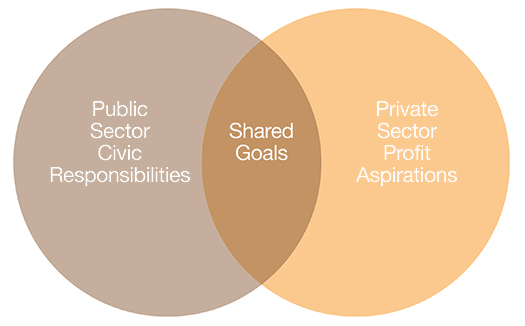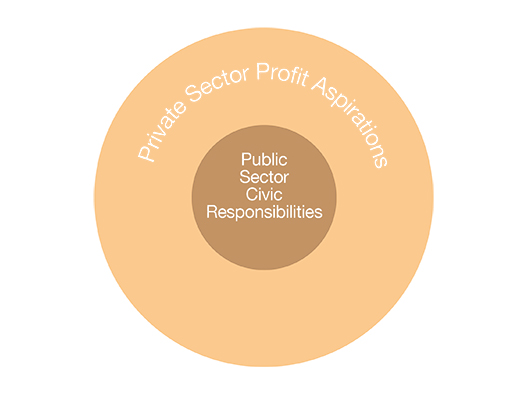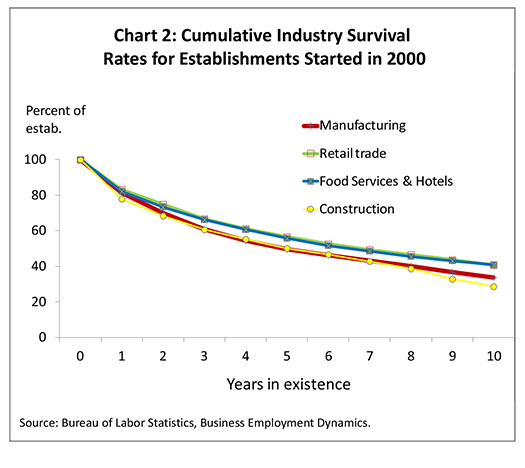A Placemaking Journal
Take These Jobs and…
(You know the rest)
Cheerleaders for American business used to get peeved when cynics contorted a quote by General Motors CEO Charles Erwin Wilson in 1953. The popular, misinterpreted version: “What’s good for General Motors is good for the country.” What Wilson actually said: “I thought what was good for our country was good for General Motors, and vice versa.”
Nowadays business image defenders can relax. Vice versa is pretty much the conventional wisdom. And not just because GM was one of the principal beneficiaries of a taxpayer bailout during the Great Recession, though that was a pretty good indication of where the discussion has ended up. It turns out we’re all-in for “jobs” and “job creation.” Which puts us squarely in the strategic wheelhouse of “job creators.” Which, in a time in which we seem to have reached consensus on the limitations of government, means defaulting to bullying or begging businesses to deliver what’s good for the rest of us.
Left-of-center types talk about raising the minimum wage, subsidizing New Deal-like jobs programs to repair infrastructure and shielding American workers from the disruptive impacts of global competition. Conservatives argue (still) that freeing companies from burdensome taxes and regulations will lift all boats. Even non-profits, the third sector of the three that comprise American society and employ its workers, are refocusing on economic inequality and how to get those left out of the game into play.
In the communities planners and designers work in, few ideas will escape review on the basis of whether or not they support the creation of “quality jobs.” That usually means stable, high-paying jobs for locals considered underemployed, if they currently have jobs at all. And in too many cases, assuring those job opportunities means preserving the option of highway-served sprawl over the complexities of mixed-use infill.
In the political context that enabled another generation to get mileage out of misstating Wilson’s famous observation, the give-and-take relationship between private and public sectors might look like this:

But these days, this seems a more accurate representation:

“It’s about the economy, stupid.”
So the big push in Smart Growth planning circles has been to build the case for a powerful connection between compact, walkable communities and attracting those quality jobs. And the data is in, whether we’re talking about Richard Florida’s “creative class” arguments; research from Smart Growth America and partners; or Chris Leinberger’s proof of the economic power of “walkable urbanism.”
In the long run, those arguments are likely to win the day, at least in communities with informed business and political leadership. Still, the problem with representing the argument for good planning as essentially an argument for job creation is that it conflates the goals of private and public sectors. And in so doing it diminishes the strength of an appeal based on why we come together in communities in the first place. You know, that stuff about governments being “instituted among men” to secure “the rights of life, liberty and the pursuit of happiness.” No mention in there about jobs or job creation, as far as I can tell.
That’s not to say government and the private sector are natural antagonists. After the most-quoted paragraphs at the beginning of the Declaration of Independence, the text is essentially a catalog of complaints about how the king flunked the basic test of governing responsibly, including the failure to provide a fair and predictable structure of rules and legal processes. It’s a structure that makes commerce possible, along with lots of other benefits. Like support for new visions for “the pursuit of happiness,” which — like Smart Growth’s connection to economic development — is being researched and refined as an important planning goal.
While governments are judged by their capacities to protect their citizens from harm and, insofar as possible, provide opportunities for improving their lives, companies have narrower aims. They are built to achieve and grow profits. Which they may do with or without the happiness of their employees. Mostly without, it turns out.
Gallup regularly surveys employers and employees about their attitudes toward their jobs and those to whom they report. Got to love this frank intro to the latest report from Gallup CEO Jim Clifton:
Of the approximately 100 million people in America who hold full-time jobs, 30 million (30%) are engaged and inspired at work, so we can assume they have a great boss. At the other end of the spectrum are roughly 20 million (20%) employees who are actively disengaged.
These employees, who have bosses from hell that make them miserable, roam the halls spreading discontent. The other 50 million (50%) American workers are not engaged. They’re just kind of present, but not inspired by their work or their managers.
Gallup research also shows that these managers from hell are creating active disengagement costing the U.S. an estimated $450 billion to $550 billion annually. If your company reflects the average in the U.S., just imagine what poor management and disengagement are costing your bottom line.
The numbers shouldn’t surprise anyone. Resenting The Man is an American tradition. Dolly Parton captured the sentiment in her No. 1 “9 to 5” hit in 1981. And before that, in 1977, Johnny Paycheck put David Allan Coe’s “Take This Job and Shove It” on the charts and clearly struck a chord. Covers were recorded by other country types, plus the Dead Kennedys, and by rappers Canibus with Biz Markie for a version called “Shove This Jay-Oh-Bee” that made the soundtrack for 1999’s Office Space — which itself became an iconic Gen-X send-up of workplace life.
If there were hopes that the so-called New Economy businesses were going to alter the relationship between employers and employees, they were likely misplaced. If anything, the always-connected obligations of new technology careers just up stress levels and give employers new tools for monitoring and measuring productivity in near real-time. Witness the debate over the look inside the culture at Amazon by Jodi Kantor and David Streitfeld in The New York Times. What they depicted feels for all the world like a sweat shop with stock options.
As Gallup and others have suggested, the failure of businesses to meaningfully engage their employees, threatens bottom lines at some point. But whether or not employee job dissatisfaction figures significantly in the inability of most companies to meet the basic requirement of all living creatures and the organizations they create to simply sustain themselves, that failure is the reality for the overwhelming majority of businesses. Here’s a graphic look at the lifespan of recent start-ups:

By year 15, about 75 percent of the firms were out of business. And this trend line holds pretty much across all business sectors. So much for stable, quality jobs.
While failure might be bad for individual companies, their investors and their employees, it’s thought to be healthy for the macro economy. It’s part of the “creative destruction” necessary to weed out those who can’t innovate and adapt to changing market conditions. But while communities can’t entirely avoid being touched by market disruptions beyond their borders, their citizens don’t live in a macro economy. They inhabit a specific place, a jurisdiction governed by officials and staff entrusted to invest resources and enact policies to make their lives better.
So the question is: To what extent do those officials want to bet their community’s future on the likelihood the jobs they prioritize — and perhaps subsidize — will be spared the fate that eliminates the overwhelming majority of businesses in a generation?
Can you hear Johnny Paycheck singing somewhere in the background?
–Ben Brown
If PlaceShakers is our soapbox, our Facebook page is where we step down, grab a drink and enjoy a little conversation. Looking for a heads-up on the latest community-building news and perspective from around the web? Click through and “Like” us and we’ll keep you in the loop.






